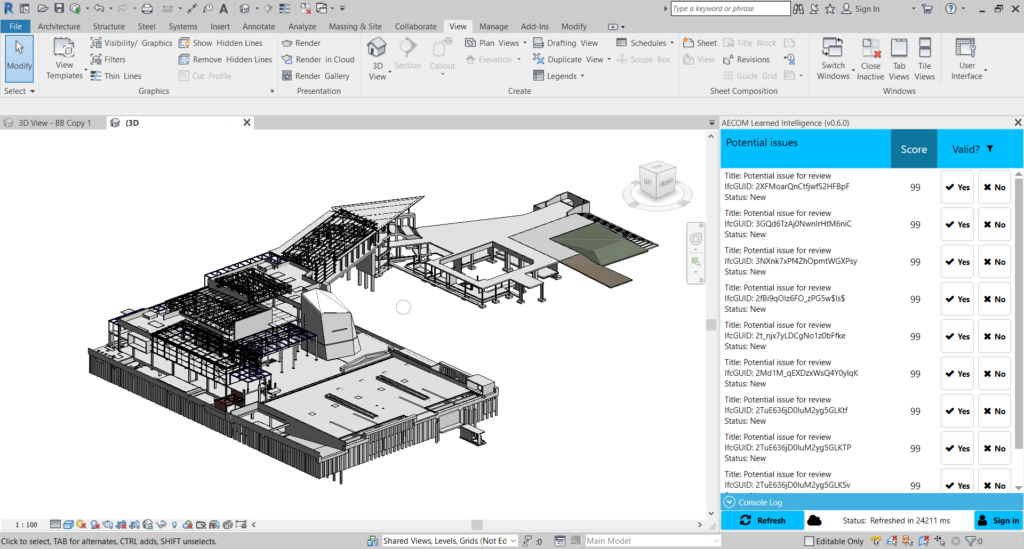Innovative tools at the forefront of Digital Transformation
Digital Transformation at AECOM has made great strides over time, with innovations from our employees and new digital tools steadily changing the way we deliver for our clients. Now, quite suddenly, we find our digital journey accelerating out of necessity. Clients and teams are engaging digitally instead of physically — and this is only effective because of the tools, processes and innovations we have invested in.
As we look to the future of our work, we are comforted to see that our vision for the firm’s digital transformation holds true. We will remain a talented, efficient and focused team — benefitting from our scale and the strength of our digital tools to deliver the best results in the industry. For example, virtual collaboration tools are table stakes in our industry and we have transitioned seamlessly to a remote work environment during the coronavirus pandemic.
Looking to the future of how we deliver work, some of our most important investments are in creating artificial intelligence and machine learning platforms to enable our teams to become even more capable and efficient. In today’s world, a secondary benefit is fast becoming apparent: Applying AECOM’s digital tools allows more of our work to be delivered remotely, by a connected global workforce, than ever before — especially critical when our clients or the global environment demand it.
In our design business, we have developed a platform called AECOM Learned Intelligence, or ALI. ALI is an artificial intelligence engine that is constantly learning from our engineering work. Whether it be a campus, a structure or a transportation network, ALI is capable of processing all the three-dimensional elements of each design. Over time, ALI is building an ever-growing library against which to check every future design that AECOM creates. In close to real-time, ALI advises our designers in order to improve the quality of their modeling.

Tools like ALI present several benefits for our business. First, they improve the quality of our work by taking full advantage of our scale. It’s as if every AECOM engineer is looking over the shoulder of our teams as they create a new design, ready to provide input and potentially catch errors and omissions before they happen. Second, they allow our organization to effectively collaborate remotely. ALI doesn’t depend on being co-located in the same AECOM office. Tools like ALI allow our employees to work naturally at scale, involving the most capable people from our global footprint in our projects. Finally, they provide immense value to our clients. Imagine a world where any infrastructure owner could tap into our collective experience to review a design.
Another exciting innovation from AECOM involves our field work. We believe that computer vision and artificial intelligence will revolutionize the way in which we collect data outside of our offices. We have created a platform that uses video and imagery collected in the field and applies artificial intelligence to find and assess infrastructure assets. Eventually, any decision that our engineer could make in the field — the condition of an overhead electric grid, the quality of a building facade, the suitability of roadway for autonomous vehicles — will be made by artificial intelligence. By training models using our skilled engineering workforce and fully leveraging our industry-leading scale, we will provide our clients even more efficient and effective infrastructure services. Today, putting less people in the field and collecting data in more efficient ways means less impact on our clients and the communities they serve.
Has our digital future changed? We don’t think so, but our journey is accelerating. At AECOM, we continue to lead the industry in imagining what’s next. Visit our new Innovation + Digital microsite, where we share innovative solutions, products, thought leadership and success stories from across our global business.






